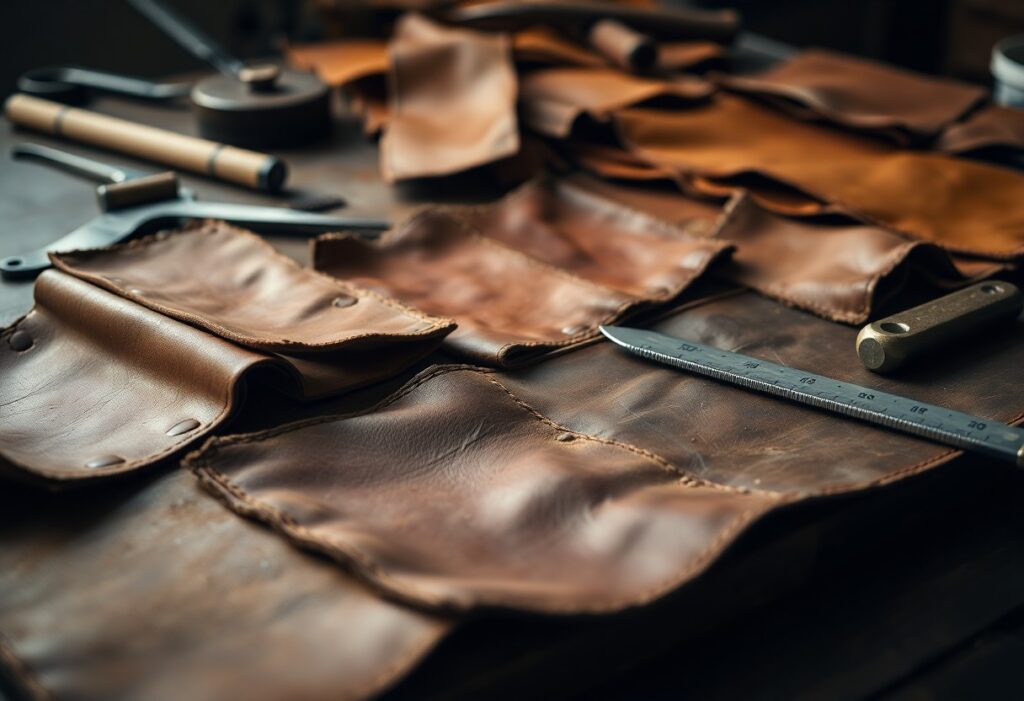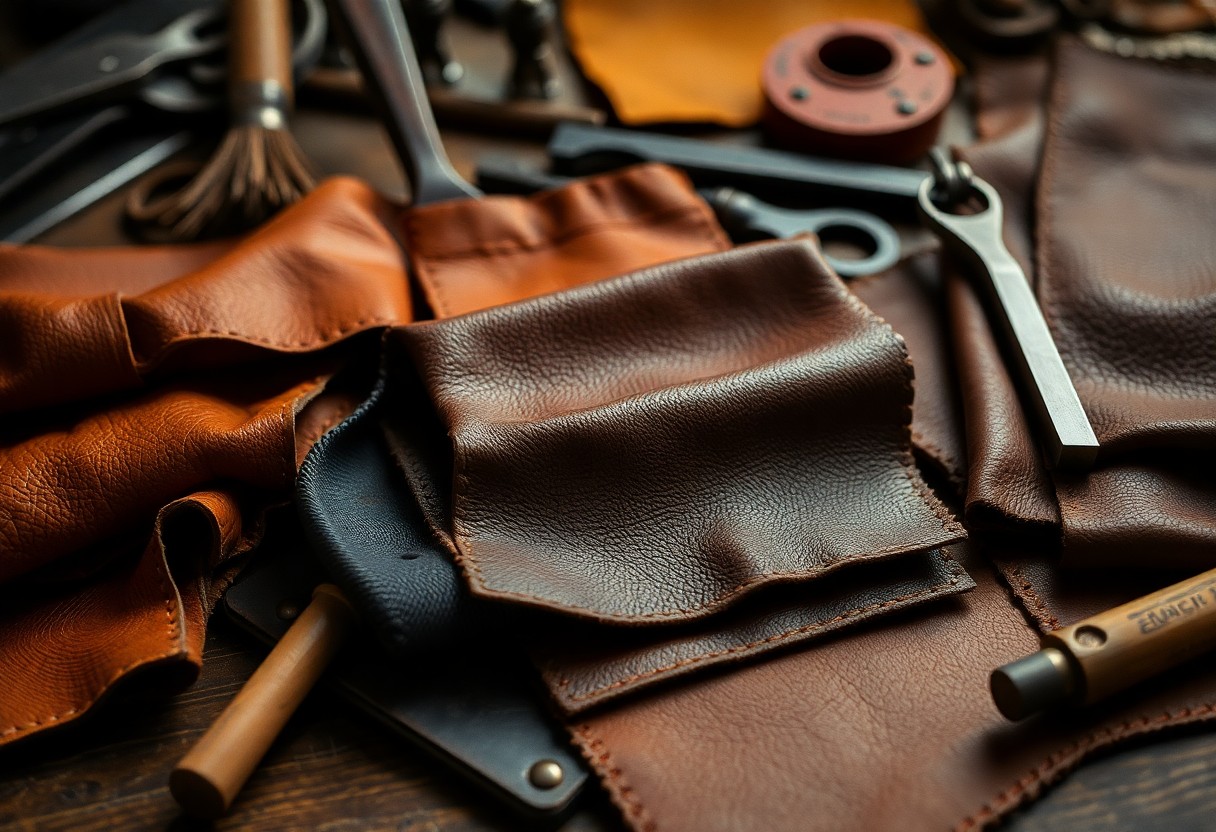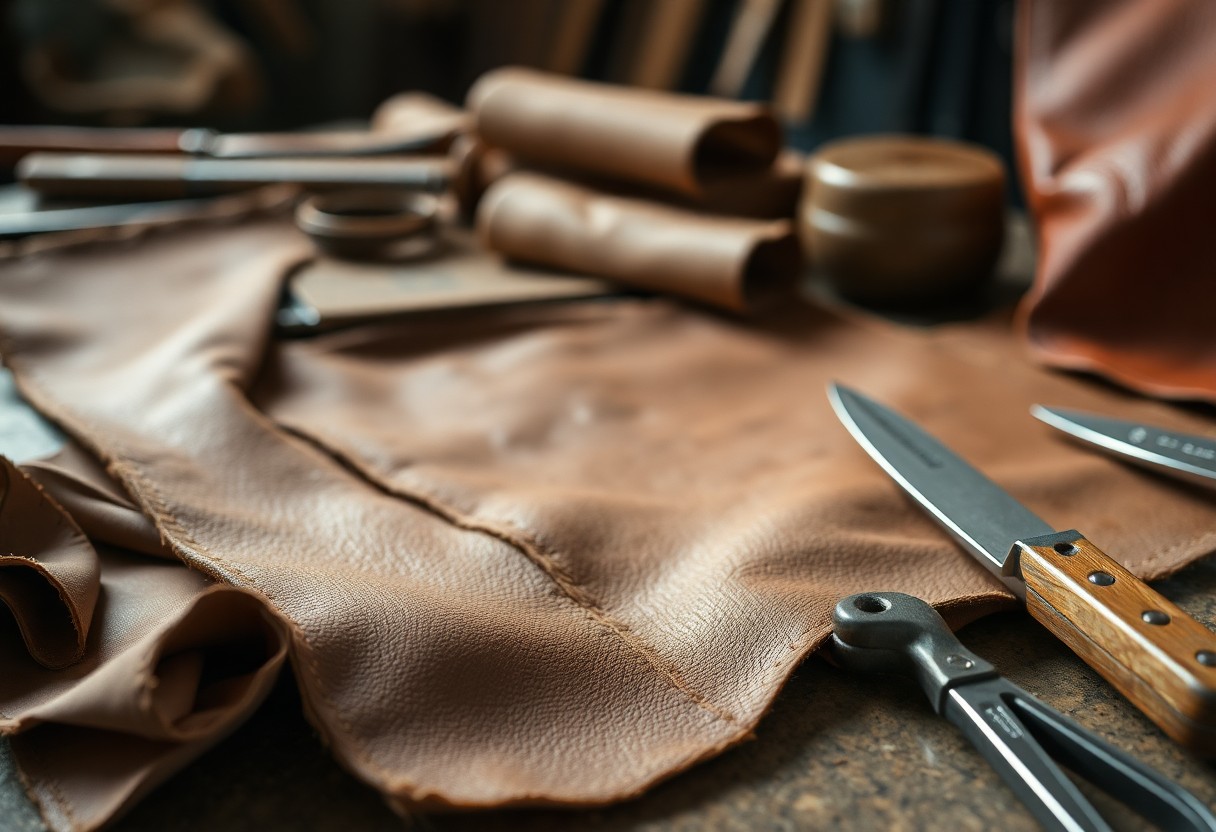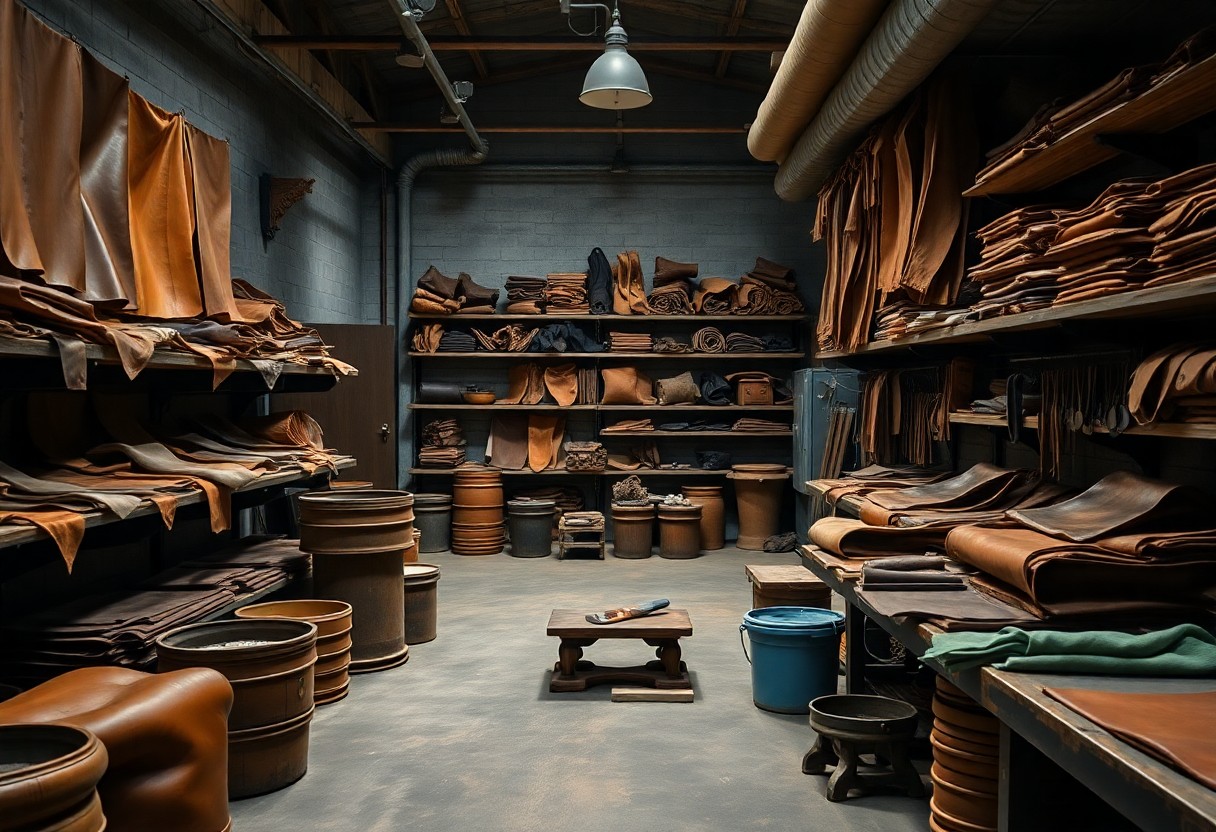
The transformation of leather tanning techniques over the years has led to an elaborate and sophisticated process that crucially influences the overall quality of leather products. Different tanning methods produce distinct characteristics in the leather, which directly impacts key attributes such as durability, water resistance, texture, and color retention. The tanning journey begins with raw hides and progresses through several essential stages, which may include chrome tanning, vegetable tanning, and chrome-free tanning methods. Each method uniquely influences the properties of the leather, subsequently affecting its usability and maintenance. By gaining a comprehensive understanding of these processes, you can make informed decisions regarding leather quality while also considering the environmental impact of the chosen method, as certain approaches are significantly more sustainable than others.
Discover and Understand the Different Leather Tanning Techniques
In the realm of leather production, a multitude of tanning methods is utilized to convert raw hides into functional leather products. The primary techniques include chrome tanning, vegetable tanning, and chrome-free tanning. This detailed guide aims to help you navigate the complexities of each process, equipping you with the knowledge to select the most suitable method for your leather requirements.
| Method | Characteristics |
| Chrome Tanning | Fast, water-resistant, accounts for 85% of global production |
| Vegetable Tanning | Natural, eco-friendly, represents 10% of production |
| Chrome-free Tanning | Environmentally friendly, comprises 5% of production |
| Combination Tanning | Integrates multiple methods for unique properties |
| Aldehyde Tanning | Specialized process for targeted applications |
Deep Dive into the Chrome Tanning Technique
The chrome tanning method utilizes chromium (III) salts to create leather that is notably soft, flexible, and highly sought after across various applications. This technique yields leather that is not only water-resistant but also readily absorbs dyes, making it a favored option within the industry. The efficiency of chrome tanning is remarkable, with the process typically completed within 24 to 48 hours, an essential factor for large-scale production demands.
Exploring the Traditional Craft of Vegetable Tanning
Among the oldest and most revered methods, vegetable tanning employs natural tannins sourced from tree bark and leaves. This approach is celebrated for its ability to produce leather that ages gracefully, developing a rich patina over time while remaining biodegradable. Different types of vegetable tanning, such as those utilizing oak bark, chestnut, and mimosa extracts, contribute to the distinctive characteristics of the final product. Expect this meticulous process to take approximately 4 to 6 weeks, resulting in leather that is typically firmer and possesses a more structured feel compared to its chrome-tanned counterparts.

In-Depth Exploration of the Leather Tanning Workflow
The journey of transforming raw hides into high-quality finished leather involves a systematic and organized process. Here’s a thorough examination of each crucial step and its importance in achieving the desired leather quality.
Critical Pre-tanning Procedures for Leather Quality
To achieve optimal leather quality, raw hides must undergo a series of careful preparation steps. This initial phase begins by soaking the hides in clean water for 24 to 48 hours to remove any salt and dirt, followed by a liming process designed to effectively eliminate hair and fats. It is imperative to maintain precise pH control during this stage to prevent any potential damage to the hides, ensuring a successful transition to the tanning phase.
Key Steps in the Essential Tanning Process
The pretanning phase commences with deliming and pickling, preparing the hides for the introduction of primary tanning agents. The most commonly utilized method is chrome tanning, which uses chromium sulfate and can produce leather in as little as 24 hours. Conversely, vegetable tanning relies on natural tannins and extends the process to approximately 20 to 60 days, allowing the leather to develop its unique qualities.
Another vital aspect of the tanning process is temperature control. Chrome tanning usually occurs at temperatures ranging from 35 to 40°C, while vegetable tanning is conducted at cooler temperatures of 20 to 25°C. Constant monitoring of pH levels is crucial to prevent damage to the leather and to ensure optimal absorption of the tanning agents.
Advanced Leather Treatment Techniques for Enhanced Durability
A variety of methods are available to improve the properties of your leather. From surface finishing to deep penetration treatments, each technique serves a specific purpose. With the right treatment, you can extend your leather’s lifespan by up to 50% and significantly enhance its resistance to water, heat, and wear, ensuring your leather products maintain their beauty and functionality over time.
Investigating Various Surface Treatments for Leather
Surface treatments applied to leather can include waxing, buffing, and protective coatings. These techniques can elevate water resistance by up to 70% and allow you to select between a shiny or matte finish based on your aesthetic preference. Additionally, surface treatments are crucial for protecting the leather against UV damage and the everyday wear and tear that can lead to deterioration.
Dyeing Techniques to Enhance Color and Longevity
Your leather can absorb various types of dyes at different depths, with aniline dyeing, for example, penetrating deeply into the material, while surface dyeing offers a more controlled application of color. The dyeing method you opt for will directly influence both the visual appeal and durability of the leather.
Moreover, the dyeing technique selected significantly affects the final characteristics of the leather. Drum dyeing can achieve up to 95% color penetration, while spray dyeing provides enhanced precision in color control. It’s important to note that natural dyes are more eco-friendly but may fade approximately 20% faster compared to chemical alternatives, impacting the longevity of the color.

Essential Quality Factors Affecting Leather Processing
The quality of leather is shaped by numerous interconnected factors throughout the processing chain. Understanding these elements is vital for achieving superior results in both leather selection and care. The tanning method, hide quality, and processing parameters all play critical roles in determining the final properties of the leather. By mastering these factors, you will be better positioned to assess leather quality according to your specific needs.
Choosing Raw Materials for Optimal Leather Quality
When selecting raw materials, it’s crucial to focus on the condition of the hides and the animal source. The quality of your raw materials has a direct correlation with the properties of the finished leather. The finest hides originate from healthy animals and are characterized by minimal surface defects. Look for thickness consistency and the absence of any parasitic damage. It’s essential to choose materials based on their intended end-use, as different applications require specific hide characteristics to perform optimally.
Significance of Processing Parameters for Quality Assurance
There is a direct relationship between processing controls and the overall quality of leather. Maintaining stringent control over pH levels, temperature, and chemical concentrations is essential. The typical tanning duration spans from 24 to 48 hours, with temperature controls kept between 35 to 40°C. Your meticulous attention to these parameters will ensure consistent leather quality throughout the entire process.
This level of detailed oversight should extend to every stage of processing. You must monitor moisture content (ideally between 45-55%), maintain appropriate drum speed during tanning, and ensure accurate chemical dosing. Additionally, the drying conditions need careful management to prevent any damage to the leather. A comprehensive focus on these parameters leads to higher-quality finished leather products.
Expert Insights for Achieving Superior Leather Treatment Outcomes
Not all leather treatment processes yield the same level of quality. It’s imperative to focus on temperature control, chemical balance, and timing precision throughout the tanning process to achieve the best results.
- Regularly monitor pH levels for consistency
- Maintain stable temperature throughout the process
- Adhere to exact chemical ratios for optimal results
- Document each operational step meticulously for quality assurance
Being vigilant about the signs of proper tanning can enable you to achieve high-quality finished leather that meets your expectations.
Strategies for Optimizing Your Leather Processing Techniques
To attain optimal results, it is essential to control your tanning environment effectively. Keep your workspace at temperatures between 20 to 25°C and maintain humidity levels within 45-55%. Ensure that your chemical solutions are fresh and accurately measured, as this can significantly influence the quality of the outcome. Regular maintenance of equipment is vital for achieving consistent and reliable results.
Ensuring Quality Standards in Leather Care Practices
The quality of leather is profoundly influenced by your storage conditions and handling procedures. Store your leather in a dry, cool area away from direct sunlight to preserve its integrity and prevent deterioration. Regularly check the moisture content and rotate your stock every 30 days to maintain freshness.
Monitoring the leather treatment process is critical for upholding quality standards. Your routine checks should encompass pH testing, physical inspections, and moisture content analysis. Document all findings meticulously and adjust your procedures based on the results. Consistent quality control enables you to identify and rectify potential issues before they negatively impact the final product.

Analyzing the Advantages and Disadvantages of Different Tanning Techniques
To gain a comprehensive understanding of leather tanning, it is essential to evaluate the various methods based on their respective advantages and disadvantages. Below is an extensive comparison of the primary tanning techniques:
| Pros | Cons |
|---|---|
| Chrome tanning: Rapid processing, cost-effective | Chrome tanning: Environmental concerns, potential disposal issues |
| Vegetable tanning: Eco-friendly, natural approach | Vegetable tanning: Labor-intensive, requires more water |
| Chrome-free tanning: Environmentally safe, quality leather | Chrome-free tanning: Complex process, elevated costs |
| Combination tanning: Offers versatile properties | Combination tanning: Quality control can be challenging |
Economic Considerations of Leather Tanning Decisions
Choosing leather tanning methods can significantly affect your overall production costs. Chrome tanning boasts 85% cost efficiency compared to vegetable tanning, while chrome-free techniques may increase expenses by 20-30%, reflecting the complexity and resource demands of these methods.
Influence of Tanning Decision on Leather Quality Characteristics
The quality of even the finest leather can be profoundly impacted by poor tanning choices. The selected tanning method directly affects essential attributes such as durability, water resistance, and texture.
For instance, leather processed through chrome tanning typically showcases superior water resistance and flexibility, while leather treated with vegetable tanning often exhibits better aging characteristics, developing a distinctive patina over time that enhances its aesthetic appeal.
Key Takeaways on Leather Tanning and Treatment Practices
From the insights shared, it is clear that various leather tanning and treatment methods have a profound impact on the quality and characteristics of your leather products. The choice between chrome, chrome-free, or vegetable tanning will significantly determine your leather’s durability, texture, and environmental implications. Additionally, the dyeing technique you select—whether using aniline or crust methods—will affect your leather’s color depth and aging process. Ultimately, the type of finishing applied—whether full grain, corrected grain, or top-coated—sets the standard for appearance, breathability, and maintenance requirements. By acquiring a thorough understanding of these processes, you will be better equipped to make informed decisions regarding your leather purchases and care practices.
Your Leather Tanning Questions Addressed: FAQs
Q: What distinguishes chrome tanning from vegetable tanning?
A: Chrome tanning employs chromium salts, resulting in soft, water-resistant leather that can be processed rapidly and economically, making it responsible for 85% of global leather production. Conversely, vegetable tanning utilizes natural tannins derived from tree bark and leaves, necessitating a longer processing time while yielding leather that gains character with age. While vegetable-tanned leather is more environmentally friendly concerning disposal, it tends to be more susceptible to staining compared to chrome-tanned alternatives.
Q: How does aniline dyeing influence leather quality and aesthetics?
A: Aniline dyeing involves immersing leather in dye baths that thoroughly penetrate the material, producing uniform color throughout. This technique ensures excellent color retention. Contemporary aniline-dyed leather is often dyed partially, maintaining a lighter middle layer, which enhances stability while ensuring good color depth on the surface.
Q: What are the key differences between full grain leather and corrected grain leather?
A: Full grain leather retains its natural surface without sanding or artificial overlays, showcasing natural pores and the strongest fiber structure, which allows for restoration when scuffed. In contrast, corrected grain leather undergoes sanding and is covered with a synthetic layer. While corrected grain leather is easier to clean and maintain, it lacks breathability and may crack over time without any means for repair.
The Article Guide to leather tanning and treatment methods processes types and their impact on quality appeared first on My Shoes Finder
The Article Leather Tanning: Methods, Processes, and Quality Impact Guide Was Found On https://limitsofstrategy.com


Ah, the world of leather tanning! It’s fascinating how something we often take for granted—the shoes on our feet or the handbag on our arm—has such a rich history and science behind it. I went down a rabbit hole a few years ago researching this very topic after I purchased a pair of “vegetable-tanned” leather boots and felt like I’d discovered some hidden treasure. Let me tell you, I was shocked to learn that the journey from raw hide to my lovely boots was akin to a reality TV show: plenty of drama (think chemicals and nature vs. nurture), twists, and not a small amount of mystery regarding which method would ultimately prevail!
You really touched on something interesting with your mention of vegetable-tanned leather. It’s so easy to overlook the processes that create the things we use daily. When you dive deep into leather tanning, it’s like unearthing a whole world steeped in tradition and innovation.